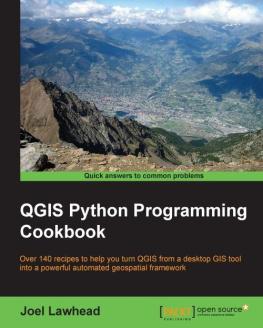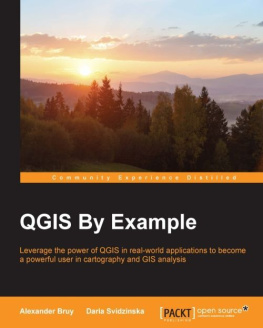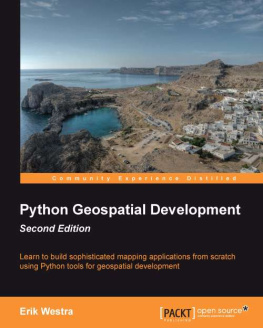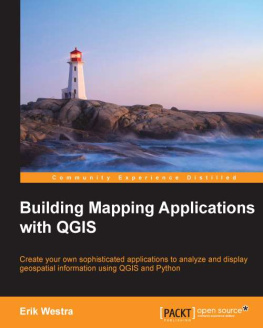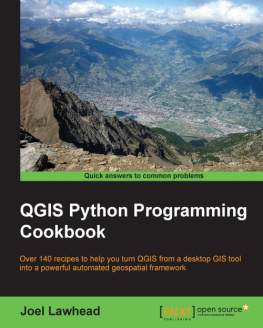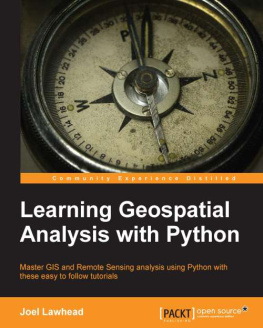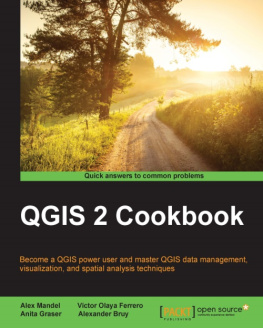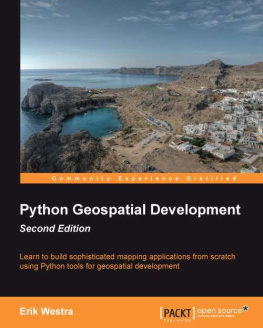Joel Lawhead - QGIS Python Programming Cookbook
Here you can read online Joel Lawhead - QGIS Python Programming Cookbook full text of the book (entire story) in english for free. Download pdf and epub, get meaning, cover and reviews about this ebook. year: 2015, publisher: Packt Publishing - ebooks Account, genre: Computer. Description of the work, (preface) as well as reviews are available. Best literature library LitArk.com created for fans of good reading and offers a wide selection of genres:
Romance novel
Science fiction
Adventure
Detective
Science
History
Home and family
Prose
Art
Politics
Computer
Non-fiction
Religion
Business
Children
Humor
Choose a favorite category and find really read worthwhile books. Enjoy immersion in the world of imagination, feel the emotions of the characters or learn something new for yourself, make an fascinating discovery.
- Book:QGIS Python Programming Cookbook
- Author:
- Publisher:Packt Publishing - ebooks Account
- Genre:
- Year:2015
- Rating:5 / 5
- Favourites:Add to favourites
- Your mark:
QGIS Python Programming Cookbook: summary, description and annotation
We offer to read an annotation, description, summary or preface (depends on what the author of the book "QGIS Python Programming Cookbook" wrote himself). If you haven't found the necessary information about the book — write in the comments, we will try to find it.
Over 140 recipes to help you turn QGIS from a desktop GIS tool into a powerful automated geospatial framework
About This Book- Use Python and QGIS to create and transform data, produce appealing GIS visualizations, and build complex map layouts
- Learn undocumented features of the new QGIS processing module
- A set of user-friendly recipes that can automate the entire geospatial workflows by connecting Python GIS building blocks into comprehensive processes
If you are a geospatial analyst who wants to learn more about automating everyday GIS tasks or a programmer who is responsible for building GIS applications,this book is for you. The short, reusable recipes make concepts easy to understand. You can build larger applications that are easy to maintain when they are put together.
What You Will Learn- Build a library of reusable scripts with ScriptRunner
- Create, import, and edit geospatial data on disk or in memory
- Get to know more about dynamic mapping
- Create and add features to static maps
- Create a mapbook
- Reproject a vector layer
- Geolocate photos on a map
- Combine multiple rasters into one image
QGIS Python Programming will teach you how to write Python code that works with spatial data to automate geoprocessing tasks in QGIS. It will cover topics such as querying and editing vector data and using raster data. You will also learn to create, edit, and optimize a vector layer for faster queries, reproject a vector layer, reduce the number of vertices in a vector layer without losing critical data, and convert a raster to a vector. Following this, you will come across recipes that will help you to compose static maps, create heavily customized maps, and add specialized labels and annotations. Apart from this, the book will also share a few tips and tricks based on different aspects of QGIS.
Joel Lawhead: author's other books
Who wrote QGIS Python Programming Cookbook? Find out the surname, the name of the author of the book and a list of all author's works by series.

